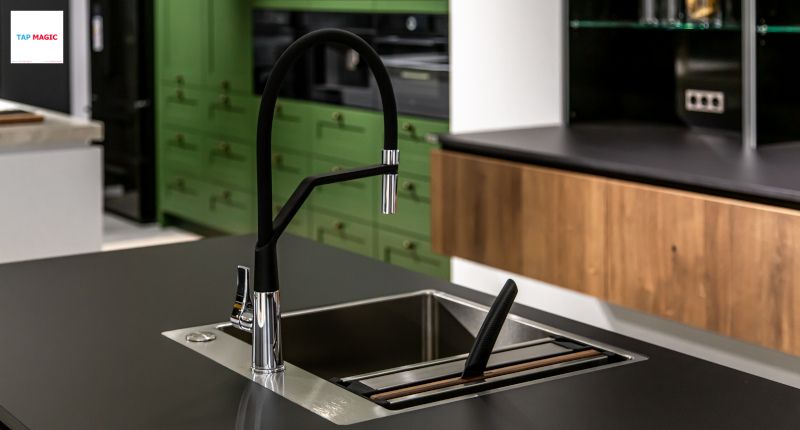
Reverse osmosis (RO) is widely acknowledged as one of the most effective methods for purifying water, resulting in clean and great-tasting water. RO systems find application in various scenarios, including whole-house filtration, faucets, aquariums, and restaurants. In most cases, RO systems are integrated with basin mixer taps. Whether you are dealing with well water, city water, or any other source, there is an RO system that can meet your specific needs. In this article, we will delve into the workings of reverse osmosis, its benefits, and its various uses. Additionally, we will explore some of the top reverse osmosis systems available on the market today.
Reverse osmosis is a sophisticated, multi-stage water treatment process designed to eliminate contaminants from unfiltered water, also known as feed water. This is achieved by applying pressure to force the water through a semipermeable membrane. Residential reverse osmosis systems typically employ at least three stages of treatment to significantly reduce the presence of various contaminants. During the final stage, the RO membrane, water travels from the more concentrated side (with more contaminants) of the membrane to the less concentrated side (with fewer contaminants), resulting in clean drinking water from Quooker taps in Dublin. The purified water produced is referred to as the permeate, while the concentrated water left behind is known as the waste or brine.
The reverse osmosis process revolves around a semipermeable membrane featuring extremely small pores that trap contaminants while allowing water to pass through. Unlike osmosis, where water naturally moves to achieve equilibrium on both sides of the membrane, reverse osmosis prevents contaminants from crossing over to the less concentrated side. For instance, when pressure is applied to saltwater during reverse osmosis, the salt is left behind, and only clean water passes through.
A reverse osmosis system begins by removing sediment and chlorine from the water using a pre filter. The water is then forced through a semipermeable membrane that filters out dissolved solids. After passing through the RO membrane, the water goes through a postfilter to ensure the drinking water is polished and clean before it reaches a dedicated faucet. Depending on the number of pre filters and postfilters, RO systems can have various stages of filtration. It depends on which kitchen mixer taps in Ireland are used in your home.
The heart of a reverse osmosis system is the RO membrane, but these systems also incorporate other filtration types. Typically, RO systems consist of three, four, or five stages of filtration. Each RO water system includes a sediment filter and a carbon filter, in addition to the RO membrane. These filters are classified as pre filters or postfilters based on whether the water passes through them before or after passing through the membrane.
Here are the primary filters used in RO systems:
When water first enters an RO system, it undergoes prefiltration, typically involving a carbon filter and a sediment filter to eliminate sediment and chlorine that could damage the RO membrane. Next, the water passes through the reverse osmosis membrane, which removes dissolved particles too small to be seen even with an electron microscope.
After this filtration, the water flows into a storage tank, where it is held until needed. The RO system continues to filter water until the storage tank is full and then shuts off. When you turn on your drinking water faucet, water from the storage tank passes through another postfilter to ensure it is clean and polished before it reaches your glass.
An RO storage tank is essential because a reverse osmosis system produces water slowly, taking about one minute to generate two to three ounces of RO water. Without a storage tank, you would need to wait several minutes to fill a glass of water. The storage tank ensures that you have a readily available supply of filtered water, so your glass fills instantly when you need it from every filtered water taps.
Reverse osmosis effectively removes a wide range of contaminants, including chlorine, salt, PFAS, and dissolved solids such as arsenic and fluoride. The carbon filters in an RO system also eliminate chlorine, unpleasant tastes, and odors, while the sediment filter removes dirt and debris.
Here is a list of contaminants that reverse osmosis can remove:
These contaminants represent some of the most common substances that an RO system can treat, but the system also removes many other impurities. However, it’s important to note that reverse osmosis does not remove certain bacteria and viruses. If your water comes from a city treatment plant, it should already be microbiologically safe.
While reverse osmosis can remove some bacteria, there is a risk that bacteria could grow on the membrane and potentially enter your water supply. To eliminate living organisms and viruses from kitchen mixer taps in Ireland, it is advisable to use UV disinfection in conjunction with reverse osmosis.
Reverse osmosis systems are versatile and can be used in various applications. Here are some of the most common uses:
The benefits of using reverse osmosis systems are numerous:
Conclusion
Reverse osmosis is a highly effective method for achieving clean and great-tasting water. Whether you need a system for your entire house, a single faucet, an aquarium, or a restaurant, there is an RO system that can meet your needs. By understanding how reverse osmosis works, the stages involved in the process, and the types of contaminants it can remove, you can make an informed decision about the best RO system for your specific requirements when installing kitchen mixer taps in Ireland. Investing in a reverse osmosis system is a step toward better health, improved water quality, and a more sustainable lifestyle.